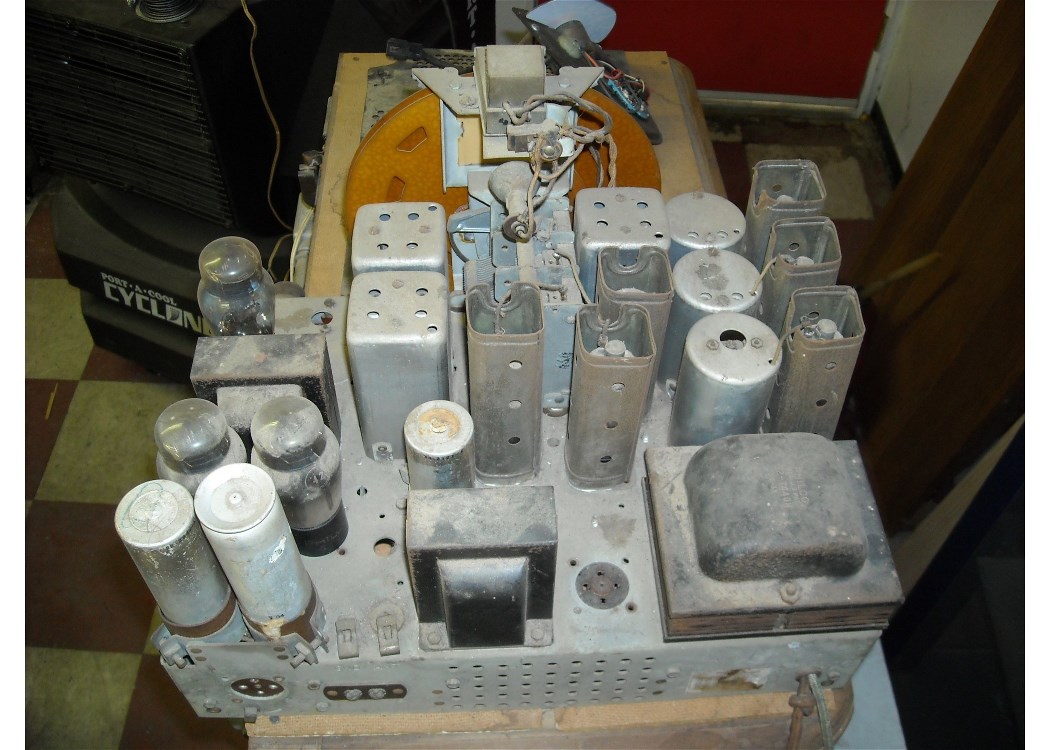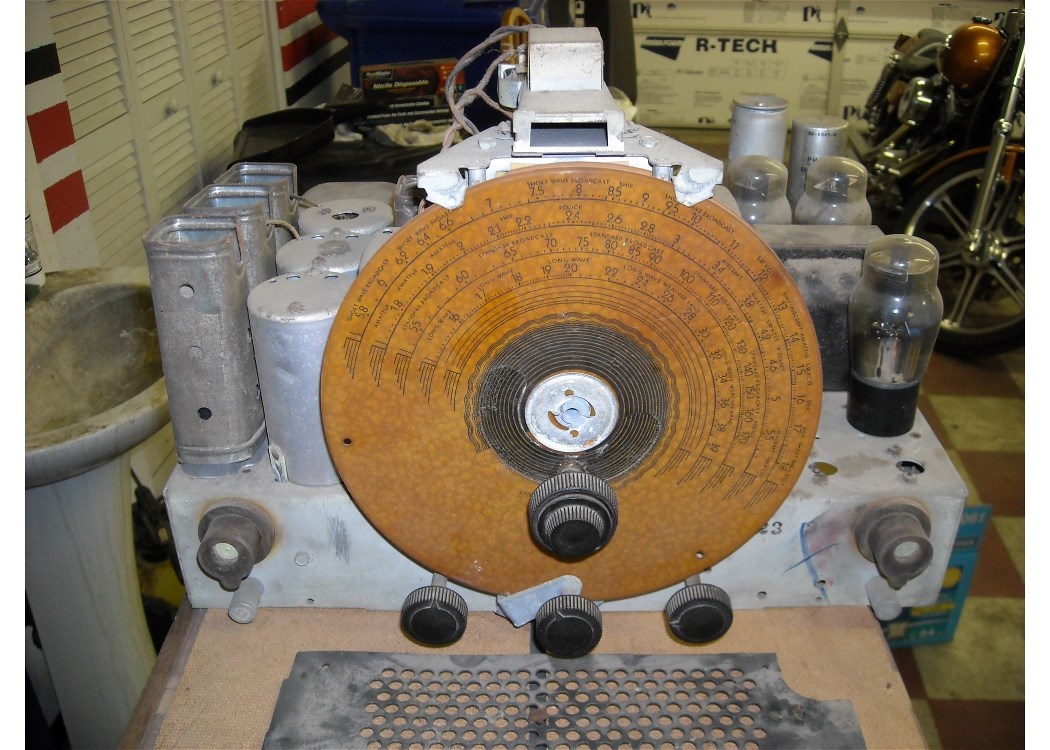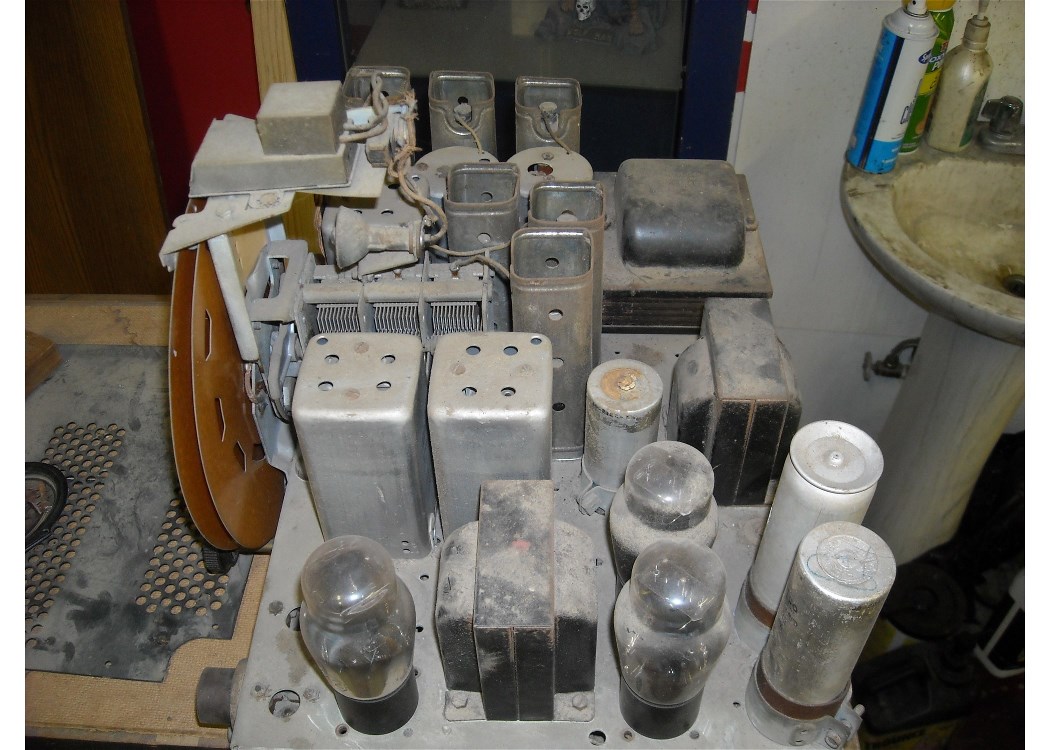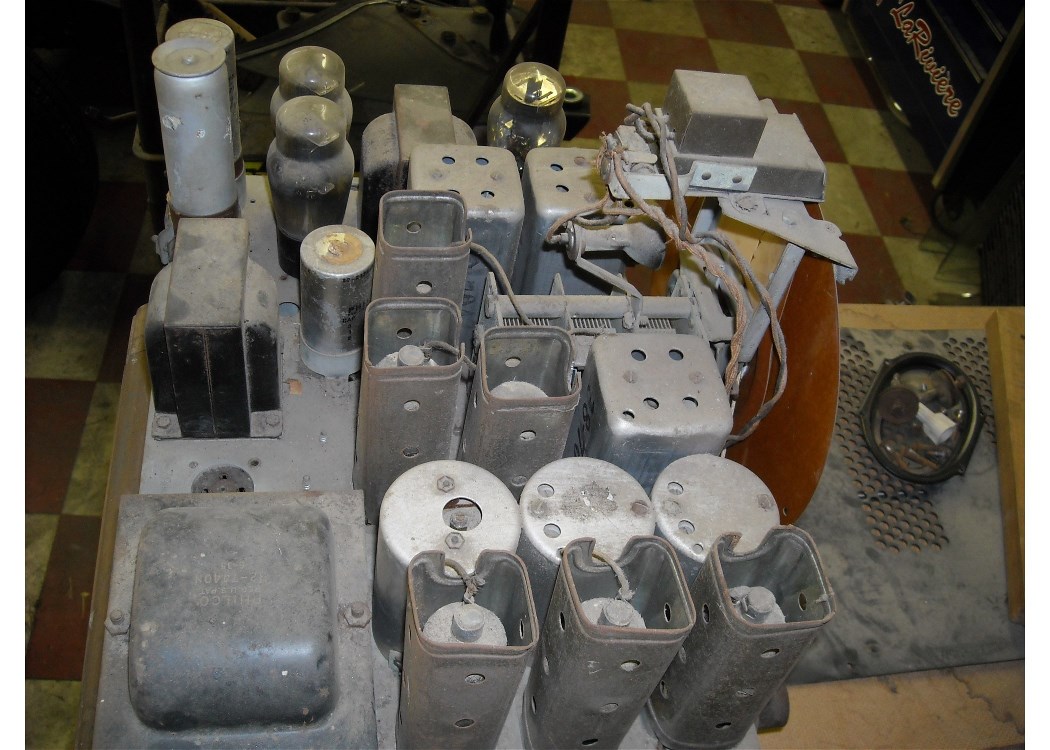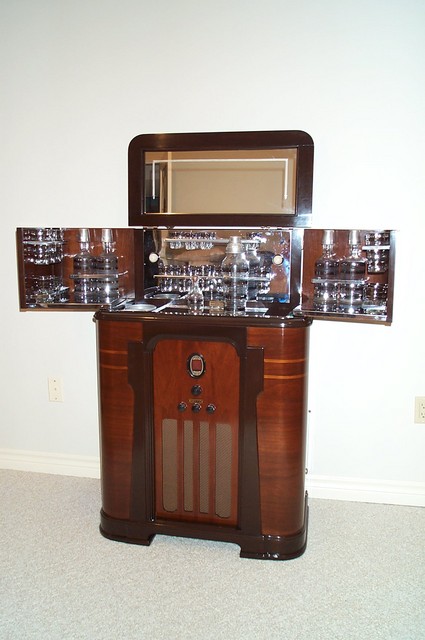Chassis & Cabinet Model ID?
Posts: 262
Threads: 27
Joined: Jan 2010
City: Rochester, NY
Hi Greg,
Welcome
Go to the home page, then under knowledge base there is a guide that will help you Id your set.
Tim
Posts: 41
Threads: 12
Joined: Jul 2013
City: Palm Springs, CA.
Posts: 4,614
Threads: 51
Joined: Sep 2008
City: Sandwick, BC, CA
I think it's a model 660 chassis, what Radiobar called it I have no idea. Most of these came with a 620 chassis so this one is better then average.
Regards
Arran
Posts: 41
Threads: 12
Joined: Jul 2013
City: Palm Springs, CA.
Thanks Arran,
I know a lot of the Radiobars came with a 610 or a 620. What is the difference between those chassis' and this one if it is a 660?
Best,
Greg
Posts: 13,776
Threads: 580
Joined: Sep 2005
City: Ferdinand
State, Province, Country: Indiana
GregL Wrote:What is the difference between those chassis' and this one if it is a 660?
Four more tubes, four bands instead of three, and more weight 
Yes, that is either a 660 or 665 chassis. Nice! Not quite a 116, but the chassis is the same size as a 116 and it has the same audio output circuit as a 116B. It will perform much better, and sound better than a 620.
--
Ron Ramirez
Ferdinand IN
Posts: 41
Threads: 12
Joined: Jul 2013
City: Palm Springs, CA.
Well, thanks for clearing that up Ron. The 4 bands you mentioned, are they short wave bands?
Greg
Posts: 13,776
Threads: 580
Joined: Sep 2005
City: Ferdinand
State, Province, Country: Indiana
If you notice on your dial scale, it tells what each band is 
1 - Long wave - 150-390 kc - not much down here.
2 - Standard Broadcast - The normal AM band.
3 - Police, Amateur, Tropical SW - You'll find some tropical shortwave on the high end of this band (around 5 mc) at night. Police departments have long since abandoned these frequencies in favor of VHF and UHF frequencies.
4 - Shortwave - All of the usual SW bands are crowded into this fourth band on your set.
--
Ron Ramirez
Ferdinand IN
Posts: 4,614
Threads: 51
Joined: Sep 2008
City: Sandwick, BC, CA
In some areas you can pick up beacons on the longwave band though I have heard that you can sometimes pick up longwave stations from Europe from the Eastern end and sometimes the middle of the continent with the right antenna. Other then that if you can pick up anything at all it's usually a navigation beacon. Apparently there is some interest, and some proposals, for using the longwave frequencies for amateur use so it may not be as useless in the future.
Does the lens in front of your dial have a window at the top?
Regards
Arran
(This post was last modified: 07-22-2013, 09:07 AM by Arran.)
Posts: 41
Threads: 12
Joined: Jul 2013
City: Palm Springs, CA.
Thanks for all the input guys. Arran, I don't seem to have any additional window at the top of my lens. What would that indicate?
Greg
Posts: 13,776
Threads: 580
Joined: Sep 2005
City: Ferdinand
State, Province, Country: Indiana
Greg
Is this an actual photo of your Radiobar, or does yours just look like this?
[Image: http://philcoradio.com/phorum/attachment.php?aid=2218]
That looks like it has a 610 or 620 chassis inside, smaller escutcheon with no provision for a shadowmeter. A 660 chassis is much larger than a 610 or 620 chassis, and needs a much taller escutcheon with a window at top for the shadowmeter screen. Plus, the shaft spacing of the 660/665 is different from the 610/620, a 660 or 665 chassis would not fit inside a Radiobar made for a 610 or 620 without some cabinet modifications.
--
Ron Ramirez
Ferdinand IN
Posts: 41
Threads: 12
Joined: Jul 2013
City: Palm Springs, CA.
The picture is not of mine. It is of one that looks identical to mine.
Posts: 4,614
Threads: 51
Joined: Sep 2008
City: Sandwick, BC, CA
Well the model 620 and 610 do not have a shadowmeter but the model 660 and 665 do have a shadowmeter. The shadowmeter, if still functional, works kind of like a magic eye tube where there is a shadow, viewed through a little window of slot just above the dial, that narrows when the radio is tuned to a station and widens when it isn't. The dial lens should have a clear window right at the top of the oval, if it doesn't then someone swapped a 660 chassis in place of the original 620 chassis. This may or may not be a problem in that the escutcheon and dial for the 660 may have more viewing area then the 620 since it has four bands instead of three, maybe Ron or someone could tell you if the escucheon from a 660 or a 116 would physically be larger too.
Regards
Arran
Posts: 13,776
Threads: 580
Joined: Sep 2005
City: Ferdinand
State, Province, Country: Indiana
The 660/665/116 escutcheons are larger...much larger...than the 610/620 escutcheons. Plus, as I mentioned before, the spacing of the control shafts is different - the bottom three controls are a bit further apart on the 660/665/116 than on the 610/620/630.
--
Ron Ramirez
Ferdinand IN
Posts: 41
Threads: 12
Joined: Jul 2013
City: Palm Springs, CA.
Arran,
I have to amend my reply. It looks like there is a small window above my dial. I didn't really understand what you were asking before but when I looked at my dial I see there is an area above the dial that aligns with a light socket behind, which would illuminate the amber area as seen in the picture below. I assume this is what you were asking about?
Best,
Greg
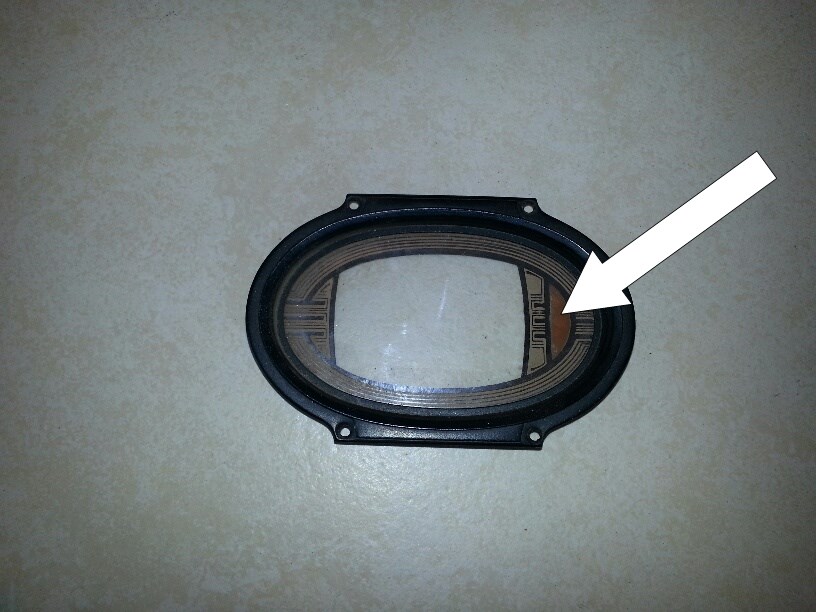
Users browsing this thread: 1 Guest(s)
|
